As students continue to grow as writers, they begin to understand the relationship between letters and sounds, and use these letters in their writing consistently. They often write letters in the correct sound sequence, but haven’t yet learned all of the various spelling and grammar patterns and rules.
WriteReader is the perfect tool for students to continue to grow as writers, and for teachers to provide support to help children understand these tricky spelling and grammar patterns. WriteReader provides a space for students to publish and share their writing with others, and celebrate their growth.
This blog post provides:
- a definition of the emergent writing stage for children 6-8 years old (understanding that varies from child to child)
- ways to support young writers with WriteReader educator tools
- ideas and strategies to support children’s growing literacy skills and motivation to write
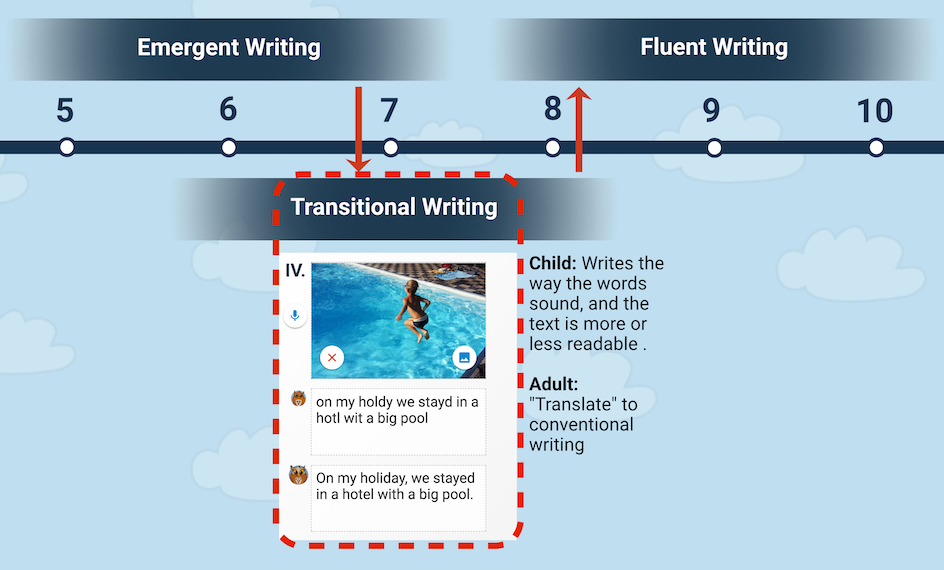
Transitional Writing
Children typically enter the transitional writing stage around 2nd or 3rd grade and some will be there until 4th grade. At this stage, students:
- begin to understand the correlation between letters and sounds
- often write letters in the correct sound sequence (i.e. “vakashun” for “vacation”) and writing can be deciphered by others
- correctly use vowels as well as consonants in their writing
- need support understanding particular spelling rules & exceptions
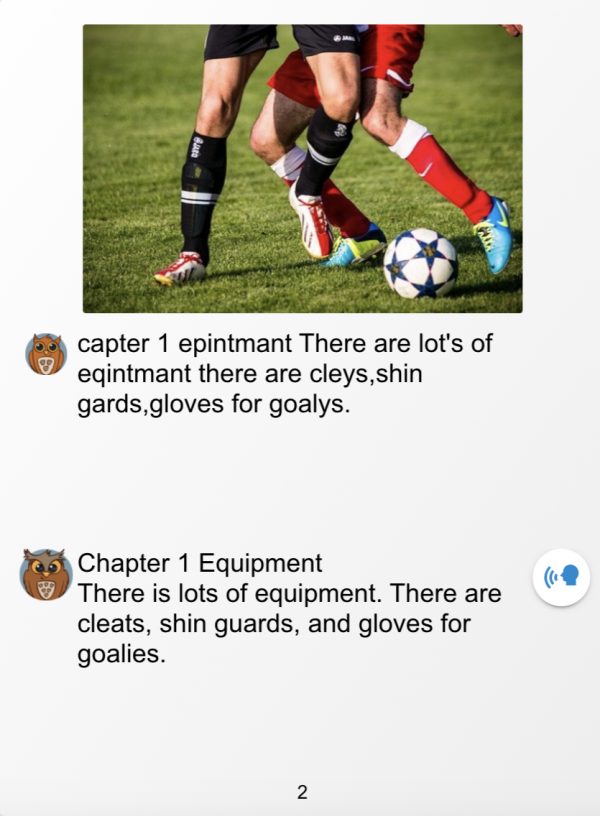
Support Suggestions
Young writers at this stage can benefit from teacher support using the educator text, as well as the comment/feedback tool within WriteReader. Teachers can use these tools to provide correct spelling, grammar or sentence structure and students are able to listen to feedback and suggestions aloud.
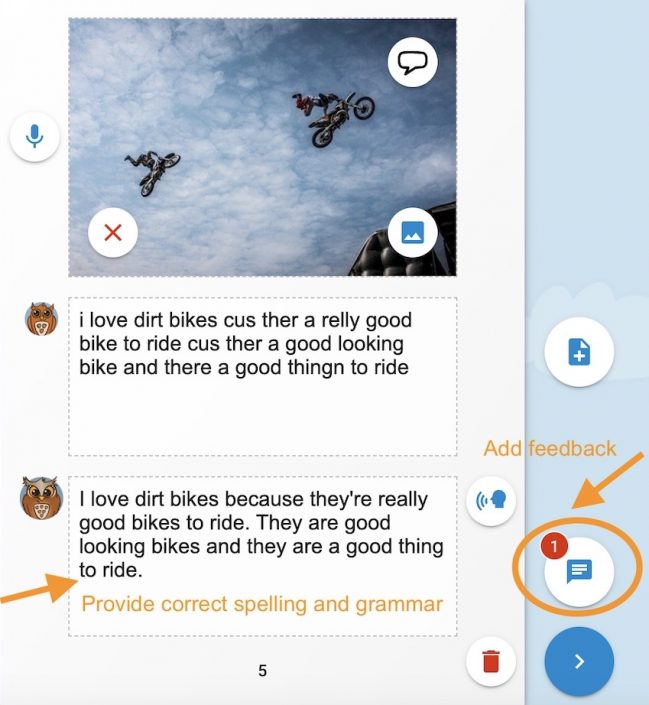
Teachers can also use the comment tool to provide richer feedback and suggestions on student work as students continue to develop as writers and their stories and ideas become more complex. Teachers can provide recommendations for improvement by asking guiding questions about the students’ writing. You can find ideas and inspiration for using the feedback function in this blog post.
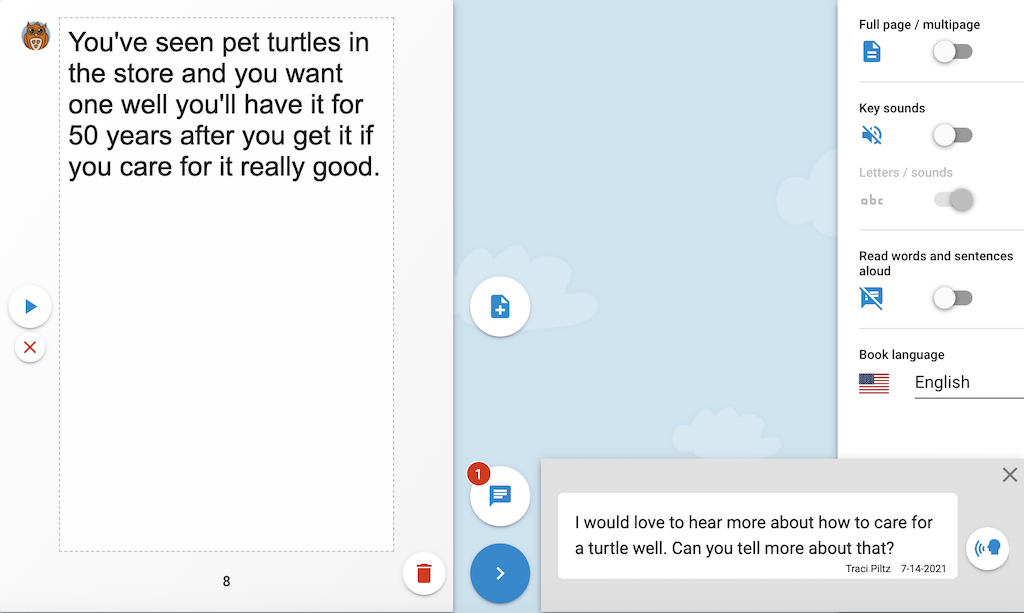
When students login, they will see a red bubble on books that have unseen feedback. Students will edit the book to listen to the feedback and make edits to their books.
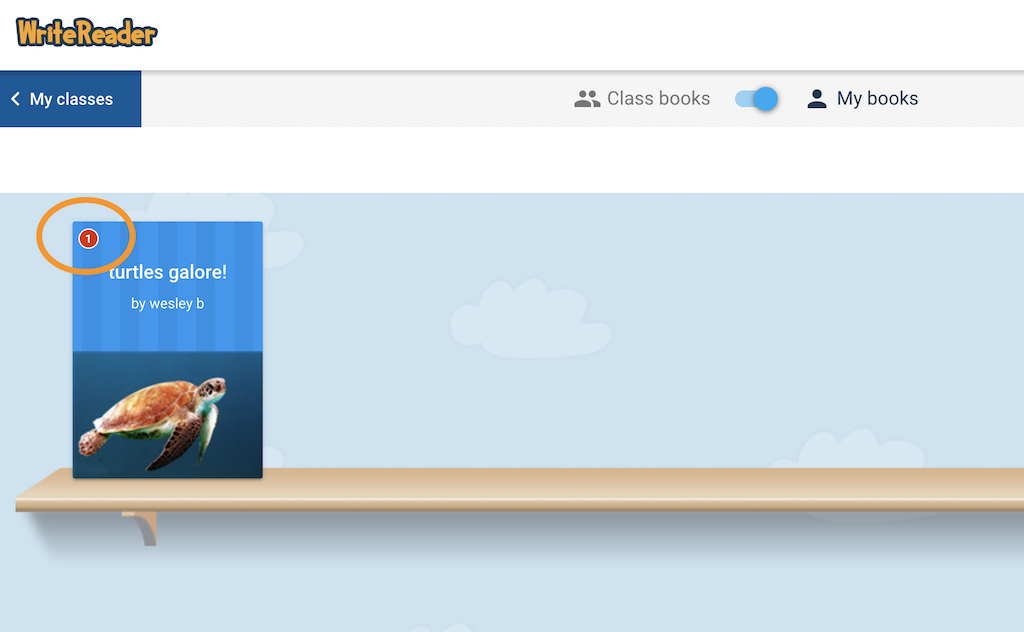
A few tips:
- Choose a small number of students each day to view their writing and provide feedback, or certain pieces of writing to provide feedback and suggestions on
- Use feedback in WriteReader to track notes while conferencing with students about their writing
- Teach students how to to view feedback and make appropriate edits
Motivating Transitional Writers
Writers in the transitional phase are just beginning to explore more in-depth writing and develop greater stamina for longer pieces of writing. They are eager to share their accomplishments and excited to read their peers’ writing. Encourage this by allowing students to view their classmates’ books on the class bookshelf. In your class settings, be sure Children can see each other’s books is toggled ON.

Then, remind students to toggle to Class Books from their dashboard in order to view their classmates’ writing. They can’t edit each other’s books, but they can read and listen to them.
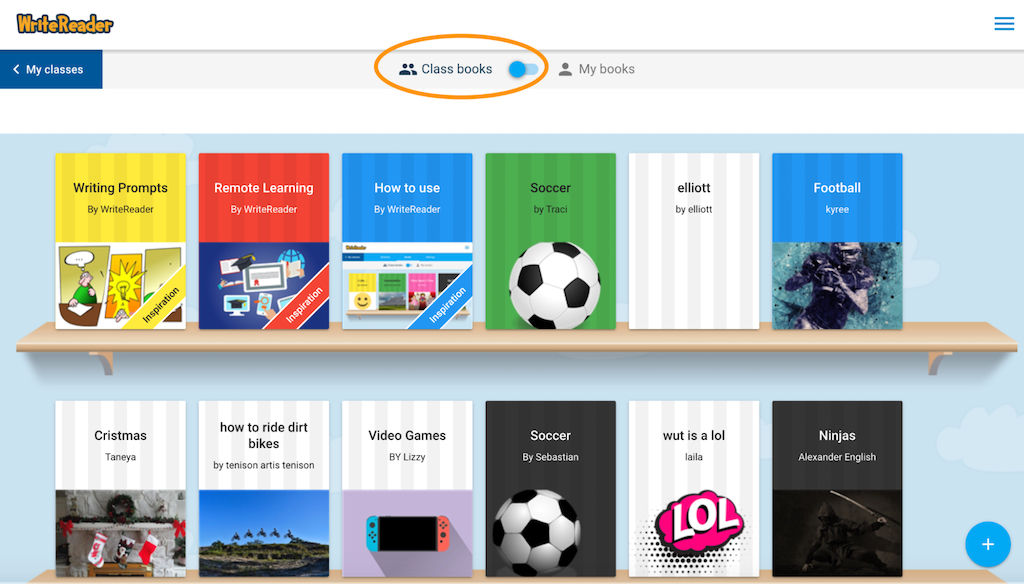
Reading Room
Another amazing way to share students’ stories with a larger audience is our Reading Room option, which will allow teachers to place a collection of books into a space that can be easily shared with a wider audience. This is a fantastic way to motivate students to write and safely share their stories with friends, family and students from other classes. So many possibilities for global connections and student engagement.
We hope you and your young writers enjoy these ideas for using WriteReader for creative, engaging writing experiences. Our next post in this series will focus on fluent writing, for children ages 8-10 years old.
